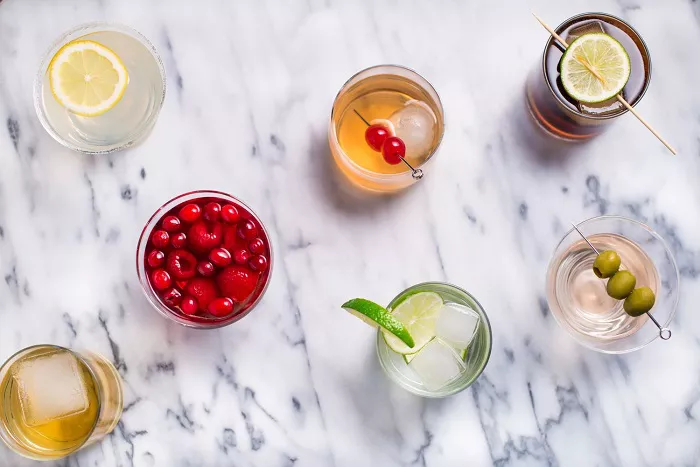As cocktail prices inch closer to the $20 mark—and in some cases surpass it—many consumers express sticker shock at what was once considered a simple indulgence. But behind every Margarita is a complex web of economic pressures, ingredient costs, and operational realities that are driving bar owners to rethink pricing.
Five bars across North America recently shared the granular economics of how they price the country’s most popular cocktail. From labor and rent to tequila tariffs and lime shortages, their insights reveal how the modern Margarita has become a symbol of the bar industry’s fragile balancing act.
From Spirits to Garnish: The Cost Components
Alcohol Costs
At the core of every Margarita are tequila and triple sec—or in the case of a Tommy’s Margarita, agave syrup instead of orange liqueur. The cost of these ingredients fluctuates not only based on brand, but also due to global trade pressures and supply disruptions.
- Holiday Cocktail Lounge in New York uses Gran Centenario Plata in its house Margarita, with a premium Casamigos version costing $2.07 for tequila and $0.44 for triple sec—before any markups.
- Simpl Things in Toronto selects Los Altos Tequila at $1.38 per ounce (USD), skipping the triple sec in favor of agave.
- Mirate in Los Angeles factors in a guest’s choice between tequila or mezcal, with costs varying between $0.75 and $1.03 per ounce.
In states like Oregon, where alcohol must be purchased from government-regulated stores, pricing is subject to availability and distributor limitations. Nick Flower of Too Soon in Portland notes how quickly stock-outs of key spirits can upend cocktail planning.
Non-Alcoholic Ingredients
Citrus prices, particularly for limes and lemons, have become highly unpredictable. Holiday Cocktail Lounge pays $0.75 per lime, translating to $1.17 per volume use. In the past, supply disruptions have led to extreme price spikes, such as the 2013 “limepocalypse.”
Bars are also making efforts to control non-alcoholic ingredient costs:
- Distillery of Modern Art repurposes pineapple scraps into house-made tepache.
- Mirate creates a “nogave” syrup in-house, costing just $0.17 per serving.
- Simpl Things uses a 2:1 agave syrup blend, costing $0.27 per drink.
Garnishes and Ice
Garnishes, salt rims, and ice cubes may seem insignificant, but they add up quickly. Distillery of Modern Art spends $0.15 per drink for its custom habanero salt. Equipment maintenance for ice machines, such as Kold-Draft systems, can run up to $250 per service visit.
Flower at Too Soon adds a creative twist by using artichoke salt—an affordable, shelf-stable alternative—to season only half the rim of each glass.
Labor and Overhead: The Hidden Burden
Labor Costs
Labor accounts for a significant share of cocktail pricing, particularly when factoring in prep time, training, and service hours.
- At Distillery of Modern Art, roughly one-third of drink pricing is allocated to labor, which includes complex ingredient preparation.
- In California, Mirate contends with a $16.50/hour minimum wage and a large staff to run its expansive cocktail program.
- Simpl Things employs three bartenders per shift at $13/hour (USD), offering additional paid training sessions and benefits.
At Too Soon, Flower tries to keep labor to 15% of a drink’s price but acknowledges that’s difficult with a food program and fluctuating sales. He offsets some of the cost by working the bar himself several nights a week.
Overhead and Insurance
Operational expenses extend far beyond ingredients and salaries. Rent, utilities, and insurance often exert a heavy toll on bar finances.
- In Toronto, Simpl Things spreads its monthly rent over the roughly 3,000 cocktails it serves, adding $1.18 per drink.
- Holiday Cocktail Lounge pays $27,000 monthly for various insurance coverages and worker benefits, a figure that underscores the high cost of operating in a major urban market.
Holiday’s pricing strategy includes a 16% pour cost markup that accommodates not only ingredients but also these less-visible expenses.
Strategies to Manage Costs
To maintain profitability without pricing customers out, many bars have adopted creative solutions.
- Holiday Cocktail Lounge uses its markup buffer to cover a mandated food program and unexpected costs.
- Mirate offsets pricey drinks with lower-cost offerings to balance menu margins.
- Too Soon actively rotates out expensive ingredients like Cynar or premium amaros, adjusting flavor profiles to maintain accessible pricing.
Simpl Things owner Evelyn Chick emphasizes that even in the face of mounting costs, attention to detail and operational discipline can help bars remain sustainable. But she also recognizes that price ceilings vary by neighborhood. “The average price of what people are willing to pay isn’t that of another neighborhood, like Downtown,” she notes.
The $20 Margarita: A New Normal
While the price of a Margarita may feel like an emblem of inflated luxury, it increasingly reflects the very real economic pressures facing the hospitality industry. With rising labor costs, volatile ingredient supply chains, and mounting overhead, bar owners must navigate a narrow path between profitability and affordability.
As Alex Strange of Holiday Cocktail Lounge puts it, “It’s very understandable that your Margarita is over $20.” It may not just be the cost of tequila—it’s the cost of doing business in 2025.
You Might Be Interested In:


